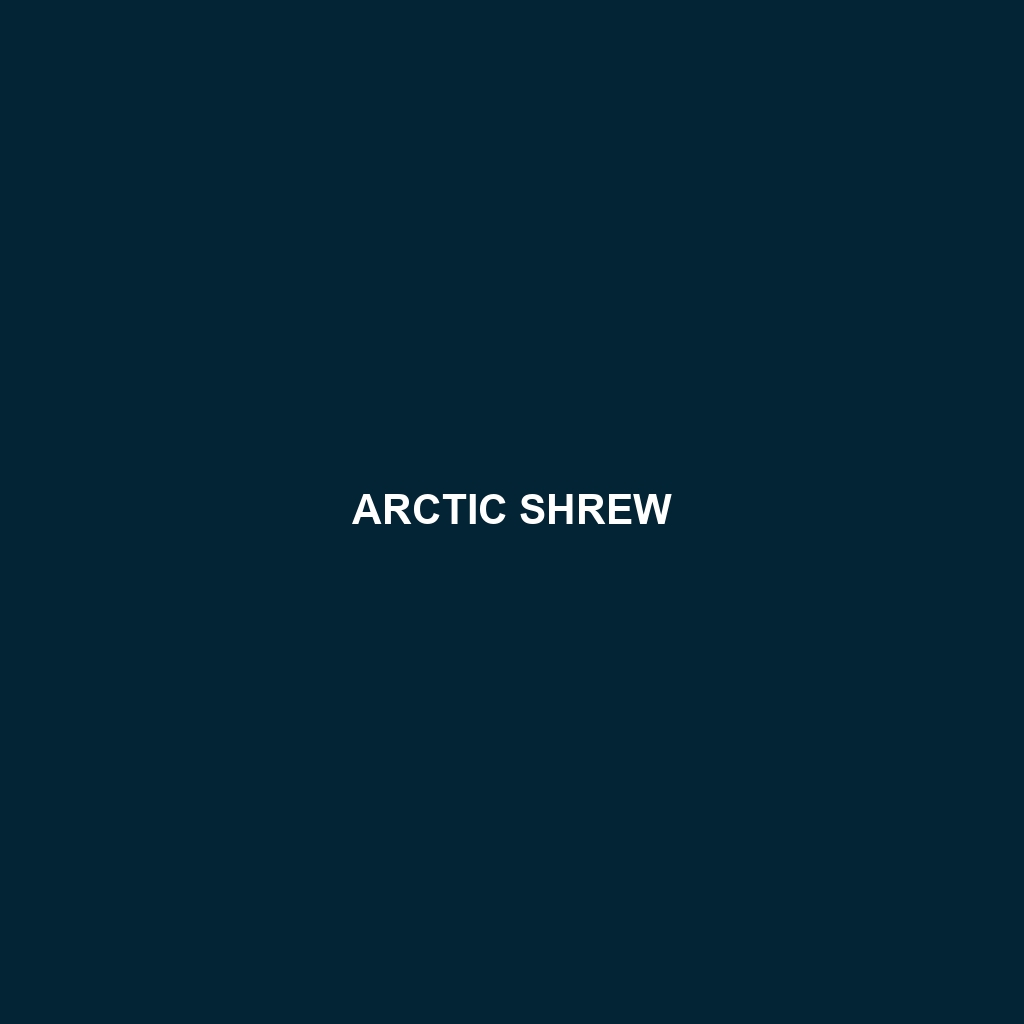Arctic Shrew: An In-Depth Species Description
Common Name: Arctic Shrew
Scientific Name: Sorex arcticus
Habitat
The Arctic Shrew is primarily found in the northern regions of North America, particularly in the tundra and taiga environments. These small mammals inhabit areas including Alaska, Canada, and parts of Greenland. They prefer moist, rich soil environments, often near water sources like streams and wetlands, which provide the necessary cover and food resources.
Physical Characteristics
Arctic Shrews are small in size, generally measuring between 7 to 11 cm in length, excluding their tail, which adds an additional 3 to 9 cm. They typically weigh around 6 to 15 grams. Their fur is dense and soft, ranging in color from brown to gray with lighter underparts. A distinctive feature of the Arctic Shrew includes its long snout and tiny eyes, which are adapted for a life primarily in dimly lit environments.
Behavior
Arctic Shrews are known for their energetic and active behavior. They are mainly nocturnal, foraging for food at night while nesting in underground burrows during the day. These mammals are excellent diggers and use their sharp claws to navigate through the soil. Arctic Shrews also engage in territorial behavior, often marking their territory with scent.
Diet
The diet of the Arctic Shrew consists predominantly of insects, earthworms, and other small invertebrates. They also consume plant matter occasionally. Due to their high metabolic rate, Arctic Shrews must eat frequently — often consuming food that is equal to their body weight daily. This dietary habit highlights their role as important predators in their ecosystem.
Reproduction
Arctic Shrews typically breed during the late spring to early summer, producing a litter of 2 to 7 offspring after a gestation period of about 21 to 24 days. The young are born hairless and blind, relying on their mother’s care for survival during the first few weeks of life. Once weaned, they develop quickly and often reach sexual maturity within a few months, ensuring the continuation of the species.
Conservation Status
The Arctic Shrew currently holds a conservation status of Least Concern according to the IUCN. Although they are not facing immediate threats, habitat degradation and climate change pose potential risks to their populations in the future.
Interesting Facts
Did you know that Arctic Shrews have an incredibly fast metabolism? They need to consume food continuously to survive because they can lose up to 50% of their body weight in just one day without food. Additionally, their saliva contains venom, which helps to subdue prey and can aid in digestion.
Role in Ecosystem
Arctic Shrews play a crucial role in their ecosystem as both predators and prey. They help control insect and invertebrate populations, which can affect the vegetation of their habitat. Additionally, they serve as a food source for larger predators, including birds of prey and small mammals, thus contributing to the biodiversity and food web dynamics of the regions they inhabit.
